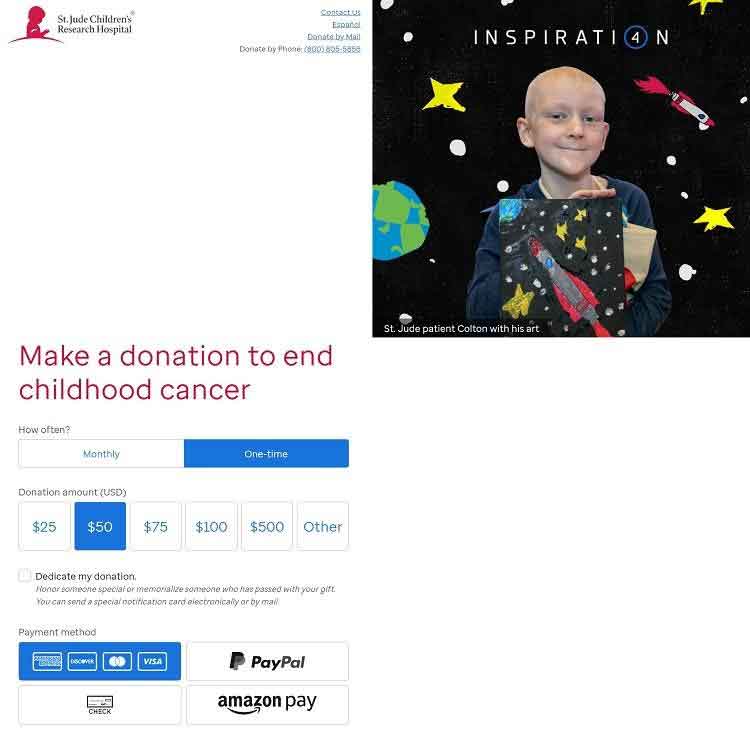Show:
How to Properly Ask Supporters for Their Donations on Your Website
Online donor support drives funding for many nonprofits. However, you don’t want to turn donors off with your language or the way you ask for money. Have you ever felt as though a charity pushed you and demanded money? Worse, maybe you felt manipulated by their fundraising tactics.
You never want a donor to second guess their contribution. You’ll bring in much more when you get people to set up recurring donations. People who give more than once to an organization contribute 42% more per year than one-time gift givers.

If you want to engage site visitors and turn them from mildly interested to passionately supportive, you can implement a few specific features.
1. Tell a Story
Since the beginning of time, people gathered around fires to tell tales and even wrote stories on cave walls. People love something relatable to their own lives. If you can capture their imagination and tap into emotions, you’ll have a much better chance of gaining their attention.
Each charity has a unique background. Why did you start the organization? Who do you hope to help? What are the stories of the founders and those you’ve reached out to already?
You can tell the story in various ways. Videos, photos and text all work to contribute to the underlying voice of your nonprofit.

Team Rubicon tells the story of what they do by sharing tales of natural disasters. They point out where they showed up and made a difference. By highlighting their efforts, the website explains how raised funds get used the impact of donations.
2. Build Your Brand
Just because you run a not-for-profit doesn’t mean you shouldn’t brand yourself. When someone sees your logo, you want them to remember your charity’s name and what you do. Think about what colors best portray your personality.
If you want to convey strength, try black or navy blue. If you want to excite people for the cause, red or fuschia might work best. Consider the emotions each hue evokes and tap into a color palette that best expresses your goals.
3. Reduce the Steps
The more complicated you make the giving process, the more likely you’ll lose people before they carry out their donation. Look at your sales funnel for your website. How many pages does the average visitor go through before getting to the final step?
You can also list the steps they’ll take, such as choosing an amount and inputting payment information. If you have more than three or four steps, see what you can eliminate or combine. Look for ways to make giving easy, such as using PayPal to pay and collect information.

St. Jude makes it super easy to donate by using PayPal or Amazon Pay. You can also input your credit card information or use a digital check if you prefer. They even list out some common donation amounts to save the user time and make the process as painless as possible.
4. Get Personal
You’re asking people to give you money. If you should be anything, it’s personal. Start by creating a buyer persona. What are your regular donors like? List out any demographic details you have, such as age, career, location, annual income and gender.
Dig a little deeper into what makes your patrons tick. What emotions seem to drive them to fund your needs? If you aren’t sure, don’t be afraid to send a survey to your regular donors and ask.
Once you’ve collected information to know their pain points and reasons for giving, use their first names and greet any already registered by name. You may need to enlist the help of a professional coder to set cookies up on your site and offer login options. You can even guide them to articles and videos about the types of topics they care most about.
5. Be Genuine
You might think fancy language and a slick copy will drive people to donate, but they want to see your authentic self. What is the reason you need funds? Be upfront and share those reasons. Where will the money go?
Never try to look like something you aren’t. If you run a small animal rescue and you’re barely making ends meet, let site visitors know you’re struggling and why. Be as upfront as possible about where money goes and what your needs are. The more transparent and authentic you are, the more likely your supporters will give you funds.

Project Hope helps frontline workers around the world with training, vaccines and supplies. On their landing page, the organization explains their current needs and why they need your one-time or monthly gift. Explaining what they do and the difference it makes lets supporters see clearly how their donations get used.
6. Prepare for the No
When you initially ask for money, many people will say no. Prepare for that initial knee-jerk negative reaction. How can you turn their no or maybe into a yes? Think about the objections the average person has.
Perhaps they are tight on money, aren’t sure you really need it or numerous other reasons. List the objects for them with a response that might change their minds. Your sales funnel should include the decision stage where people come up with reasons they can’t give you their money. Your job is to convince them they should.
Be Polite
It might sound obvious, but remember your manners. Do you respond well to fear tactics, clickbait and threats? Most people do not. While it’s okay to tap into user emotions, it’s not okay to try to scare people or use negative triggers to trick them into giving.
Say please, thank you and be upfront. Know who you are as a nonprofit and the way you ask for donations on your website should naturally fall into place.
About the author:
Eleanor Hecks is editor-in-chief at Designerly Magazine. She was the creative director at a digital marketing agency before becoming a full-time freelance designer. Eleanor lives in Philadelphia with her husband and pup, Bear.

 Return to Previous Page
Return to Previous Page








